 July 15, 2021 John E. Ross, KD8IDJ, Editor
| ||||||||
ARRL Headquarters Holds Rededication Ceremony On Thursday, July 15, at 10 AM EDT, ARRL Headquarters in Newington, Connecticut, hosted a rededication ceremony, recognizing ARRL's commitment to all radio amateurs who enhance the communications capability and security of the nation. The event
coincided with the attendance of ARRL's all-volunteer Board of Directors, who had traveled in from across the country for in-person committee and Board meetings this week. "Associations advance America," ARRL President Rick Roderick, K5UR, said in his remarks. "Associations bring people together around a common purpose. For ARRL and our members, that purpose is amateur radio... Over the last year, I have witnessed the extraordinary dedication of ARRL members, our staff, and our Board of Directors. Without skipping a beat, we have worked together to equip our members with the opportunities they need to serve an active and vibrant Amateur Radio Service for our country." Roderick also recognized members of ARRL's Amateur Radio Emergency Service® (ARES®) for serving their communities with essential communications When All Else Fails®.
In his remarks, ARRL CEO David Minster, NA2AA, reflected on the commitment made to maintain the organization's operations for the benefit of its members during the pandemic. "That we were able to continue proudly and passionately serving our members and our nation through these challenges speaks to the resilience of our organization, and the commitment of our volunteers and staff." The event also included remarks by Connecticut District 1 US Congressman John B. Larson; Connecticut State Senator Matt Lesser, and Glenn A. Field, KB1GHX, Warning Coordination Meteorologist for the National Weather Service Boston/Norton office in Massachusetts. Also in attendance were representatives of the American Red Cross; the Connecticut Department of Emergency Services and Public Protection; the International Amateur Radio Union (IARU); Radio Amateurs of Canada; Connecticut General Assembly; the Town of Newington, and ARRL Officers, Board members, and staff. A video of the rededication ceremony is posted on ARRL's YouTube channel. Most 2021 Field Day Participants Entered in Class D In the second ARRL Field Day (FD) with rule waivers in place, some 4,815 entries were received at ARRL Headquarters by July 13 -- the majority "It appears that larger groups were more the norm in pre-pandemic times, as expected," ARRL Contest Program Manager Paul Bourque, N1SFE, observed. "From the discussions I've been having with participants, even though some groups gathered in larger numbers this year, many participants chose either to gather in smaller groups or to operate solo from home as Class D or Class E stations. Although I don't think we'll see the number of entries that we did last year, we're close in terms of the number of participants." With about 2 weeks to go until the entry submission deadline, the tally of participants reported is 16,166. They made just north of 1 million
total contacts. "FD was already a success on Saturday, with the stations working smoothly, and lots of local visitors dropping by," said Andy Goss, AA5JF, at Augusta University Amateur Radio Club's WA4AUG. "An hour after sunrise on Sunday, we were counting our points, when Darby, KK4PEQ, announced he had just worked a station on 6-meter phone -- just playing around on 50 MHz using the 20/15/10 tribander," Goss said. "He stayed on 6 [meters] for five QSOs, but we quickly [moved] to 10 and 15, finding those bands were open to just about everywhere, and we doubled our score in just 3 hours. What a rush!" FD Entries are Due Soon There's still time to submit your 2021 Field Day entry. Most of this year's Field Day entries have been submitted via the online web app (worth 50 bonus points!), although some 50 paper logs have been mailed in. Participants can check the Entries Received page to make sure their entries were received and complete. If the entry status indicates "Pending documents," either the required dupe sheet (or in lieu of that, a Cabrillo log file), or supporting documentation of claimed bonus points is missing. Bourque said some 250 entries fall into that category right now. Participants can add documentation or edit their entries by following the link provided in the confirmation email sent to the email
address provided upon entry, up until the entry submission deadline. Field Day entries must be submitted online or postmarked no later than 2059 UTC on July 27, 2021. The breakdown of Field Day entries by class, as of July 13, showed 4,815 total entries, with 613 in Class A, 582 in Class B, 57 in Class C (Mobile), 2,619 in Class D, 858 in Class E, and 86 in Class F. For his 2021 Field Day, Scott Hanley, WA9STI, took to the woods -- the Los Padres National Forest -- at a site some 7,400 feet elevation in the mountains overlooking California's Central Valley. He operated as WA6LE in Class 1B. He put 358 contacts in the log on CW and phone -- short of his 400-contact goal. "Almost all activity was on 20, 40, and 75/80 meters to a G5RV or end-fed 20-meter dipole," Hanley said. "Six meters did not open, so I only had two local SSB contacts and only three contacts on 2-meter FM." ARRL Podcasts Schedule
The On the Air and Eclectic Tech podcasts are sponsored by Icom. Both podcasts are available on iTunes (iOS) and Stitcher (Android), as well as on Blubrry -- On the Air | Eclectic Tech. ARRL Learning Network Webinars Visit the ARRL Learning Network (a members-only benefit) to register, check on upcoming webinars, and to view previously recorded sessions. Learning with High-Altitude Balloons -- Jack McElroy, KM4ZIA, and Audrey McElroy, KM4BUN / Thursday, July 22, 2021 @ 3:30 PM EDT (1930 UTC)
ARRL members may register for upcoming presentations and view previously recorded Learning Network webinars. ARRL-affiliated radio clubs may also use the recordings as presentations for club meetings, mentoring new and current hams, and discussing amateur radio topics. The ARRL Learning Network schedule is subject to change. Youth on the Air Campers Enjoy Successful ISS Contact, Busy with Other Activities The first Youth on the Air (YOTA) camp for young radio amateurs in the Americas is under way in West Chester, Ohio. Among other activities, the campers have been operating special event station W8Y from both
the National Voice of America Museum of Broadcasting and from the camp hotel. The camp wraps up with an hour-long closing ceremony on Friday, July 16. "Things are going really well," said Camp Director Neil Rapp, WB9VPG. The earlier launch of a balloon carrying a ham radio payload was successful, he said, and -- after pinpointing where the payload landed some 3 hours away -- the campers were able to retrieve the package, thanks to some understanding landowners. Rapp said the balloon reached approximately 100,000 feet. Rapp said that campers have gotten along well from the first day, and problems in general have been few and minor. Several of the approximately two dozen campers got to ask questions of ISS crew member Akihiko Hoshide, KE5DNI, during a Tuesday Amateur Radio on the International Space Station (ARISS) contact. Responding to a query posed by Graham, KO4FJK, Hoshide said the most interesting things he's seen from space included flying through an aurora and looking down at shooting stars from the ISS. He also said the ISS crew was able to view a partial lunar eclipse from space. Another camper, Adam, KD9KIS, wanted to know how often the ISS crew members use the onboard ham station.
Hoshide said individual crew members may get on the radio every couple of weeks or so, or as the opportunity arises. "This ARISS contact is intended to inspire these young hams to learn more about communication using amateur satellites and making ARISS radio contacts," ARISS said in announcing the contact date. ARISS team member John Sygo, ZS6JON, in South Africa, served as the telebridge relay station for the late-morning event, which was streamed live via YouTube. Rapp said he's hoping this pilot camp venture will provide the information needed to replicate the camp over multiple locations for years to come. "We also hope this brings a more robust community of young hams into amateur radio," he added. The long-anticipated summer camp for up to 30 hams, aged 15 through 25, was set for last June, but it had to be rescheduled until summer 2021 because of COVID-19 pandemic concerns. The camp for young hams in the Americas took its cue from the summer Youngsters on the Air camps held for the past few years in various IARU Region 1 countries. The Region 2 camp is aimed at helping participants to take their ham radio experience to the next level by exposing them to a variety of activities and providing the opportunity to meet other young hams. Activities include kit building, antenna building, transmitter hunting and
direction finding, operating with digital modes, and launching a high-altitude balloon. Amateur satellite operation is one of the workshops provided. Others include effective radio communication, local ham radio history, and using amateur radio during emergencies. The YouTube channel features daily highlight videos. W8Y has been on the air as campers complete projects, between sessions, and during free time, although some late-evening slots have been on the schedule. The camp's opening observance on Sunday featured keynote speaker Tim Duffy, K3LR, who told the campers, "Amateur radio is the best hobby in the world." Campers also saw a video presentation by International Amateur Radio Union Region 1 Youth Working Group chair Philipp Springer, DK6SP. ARRL and The Yasme Foundation donated project kits for the campers. XTronics provided temperature-controlled soldering stations. The brochure on the Youth on the Air website includes more details about the camp. -- Thanks to ARISS for some information Announcements
Next QSO Today Virtual Ham Expo to Offer Nearly 100 Speakers, 18 Topic Tracks The third QSO Today Virtual Ham Expo is a month away. The live event takes place over the August 14 - 15 weekend, and presentations will remain available on demand for 30 days. Sponsors predict that the event will be "a great experience" for those wanting to improve their knowledge of amateur radio as well as of cutting-edge "At the Expo, you can listen and engage with almost 100 internationally recognized ham radio luminaries on approximately 18 different topic areas -- there is something for everyone," the sponsors say. "Topics include antennas and transmission lines; build-a-thons; contesting/DX; controllers; digital voice mode; emergency communications; filters and tuned circuits; the future of amateur radio; ham history; HF digital modes; new licenses; power amplifiers; propagation; radio astronomy; software and services; space and satellites; test and measurement, and youth in amateur radio." A complete list of speakers at the QSO Today Virtual Ham Expo is posted on the event's website. These are some examples:
There's no limit on the number of topics and tracks that QSO Today Virtual Ham Expo visitors may view. Return any time within 30 days to (re)view any presentation, as well as to explore exhibitor offerings. "Early bird" tickets are $10 ($12.50 "at the door"). Access to only the exhibitor area is free. 40th Annual ARRL-TAPR Digital Communications Conference Set The 40th annual ARRL-TAPR Digital Communications Conference (DCC) will be held online September 17 - 18. Registered DCC attendees participating via Zoom will be able to interact with presenters and other attendees via a chat room and have the option to "raise a virtual hand" to ask questions. You may register to attend, but non-registered participants can view the livestream on YouTube at no cost, Registration is free for TAPR members and $30 for non-members. (Members receive a 100% discount at checkout.) Non-members who would like to join TAPR and receive the free DCC pass can add TAPR membership and DCC registration to their shopping carts. After checkout, they will receive the free DCC pass when their membership is processed. The DCC is soliciting technical papers for presentation and for publication in the Conference Proceedings. Authors do not need to participate in the conference to have their papers included in the Proceedings. The submission deadline for papers is August 15. Submit papers via email to Maty Weinberg, KB1EIB. Papers will be published exactly as submitted, and authors will retain all rights. Conference papers will be distributed as PDFs to participants. Printed copies of the papers will be available for sale at Lulu (URL to be determined). Speakers are invited to deliver presentations on topics of interest without submitting papers for the Conference Proceedings. All speakers and presenters should contact Steve Bible, N7HPR, to reserve a slot for a presentation. Indicate whether you need a 15- or 30-minute slot, and whether you need to present on a specific day. A Paper and presentation topic areas include, but are not limited to, software-defined radio (SDR), digital voice, digital satellite communication, digital signal processing (DSP), HF digital modes, adapting IEEE 802.11 systems for amateur radio, Global Positioning System (GPS), Automatic Position Reporting System (APRS), Linux in amateur radio, AX.25 updates, internet operability with amateur radio networks, TCP/IP networking over amateur radio, mesh and peer-to-peer wireless networking, emergency and homeland defense, and backup digital communications using amateur radio. Ad hoc "lightning talks" on various topics of interest will be announced throughout the conference, and registered attendees will be able to participate in any lightning talk that interests them. Hardware and software demonstrations will be conducted during the DCC by means of Zoom's breakout room feature. -- Thanks to Stan Horzepa, WA1LOU Amateur Radio in the News ARRL Public Information Officers, Coordinators, and many other member-volunteers help keep amateur radio and ARRL in the news.
Share any amateur radio media hits you spot with us. The K7RA Solar Update Tad Cook, K7RA, Seattle, reports: Solar activity declined this week -- by a lot. Average daily sunspot number plummeted from 55.6 to 21.3, and average daily solar flux slid from 88.9 to 72.9. Geomagnetic indicators were about the same, with average daily planetary A index at 6.6, although the daily value increased to 14 on Wednesday, July 14, due to increasing solar wind.
Predicted planetary A index is 8 on July 15; 5 on July 16 - August 1; 8 on August 2; 5 on August 3 - 7; 12, 16, and 12 on August 8 - 10; 8 on August 11 - 12, and 5 on August 13 - 31. In Friday's bulletin, look for reports of sporadic-E openings on 10, 6, and 2 meters. Sunspot numbers for July 8 - 14 were 23, 23, 24, 23, 22, 11, and 23, with a mean of 21.3. The 10.7-centimeter flux was 73.4, 73.8, 74, 73.6, 71.6, 72, and 72.1, with a mean of 72.9. Estimated planetary A indices were 5, 5, 6, 4, 7, 5, and 14, with a mean of 6.6. Middle-latitude A index was 5, 7, 8, 4, 7, 7, and 10, with a mean of 6.9. A comprehensive K7RA Solar Update is posted Fridays on the ARRL website. For more information concerning radio propagation, visit the ARRL Technical Information Service, read "What the Numbers Mean...," and check out this Propagation Page. A propagation bulletin archive is available. For customizable propagation charts, visit the VOACAP Online for Ham Radio website. Share your reports and observations. In Brief...
Getting It Right! A sentence in the article "First X-Class Major Solar Flare of Solar Cycle 25 Blacks Out HF on July 3," in the July 8 edition of The ARRL Letter, incorrectly characterized the mechanism of the phenomenon. HF propagation blackouts are caused when x-ray and extreme ultraviolet radiation from X-class solar flares strongly ionizes the absorbing D-region in Earth's sun-facing dense lower atmosphere. The top layer of the atmosphere is not involved. The article "Amateur Radio Volunteers Prepared for and Tracked Elsa," in the July 8 edition of The ARRL Letter, busted the title of Eastern New York Section Emergency Coordinator Dave Galletly, KM2O. The RV Braveheart is a better deal that we thought. The $250,000 price tag cited in an "Announcements" item in the July 8 edition of The ARRL Letter was in New Zealand dollars, which works out to about $175,000 in US dollars. -- Thanks to Ned, KH7JJ Just Ahead in Radiosport
Upcoming ARRL Section, State, and Division Conventions Many conventions and hamfests have been canceled or postponed due to the coronavirus pandemic. Check the calendar of canceled events on the ARRL website.
Find conventions and hamfests in your area.
ARRL -- Your One-Stop Resource for . .
Subscribe to...
Free of charge to ARRL members...
| ||||||||
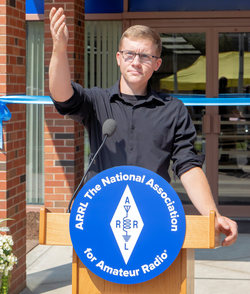
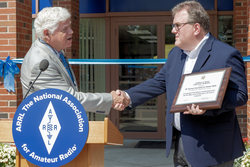
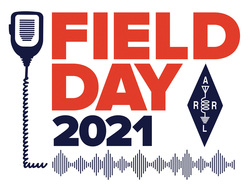 in Class D (Home Stations). Last year saw more than 10,213 entries and 18,886 participants. Before the pandemic, in 2019, 3,113 entries were submitted, with 36,420 total participants.
in Class D (Home Stations). Last year saw more than 10,213 entries and 18,886 participants. Before the pandemic, in 2019, 3,113 entries were submitted, with 36,420 total participants.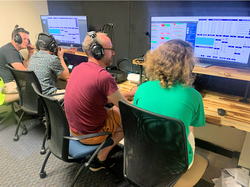
.png)
.jpg) The latest episode of the On the Air podcast (Episode 19) features a discussion with ARRL Lifelong Learning Manager Kris Bickell, K1BIC, about the launch of the new ARRL Learning Center later this month.
The latest episode of the On the Air podcast (Episode 19) features a discussion with ARRL Lifelong Learning Manager Kris Bickell, K1BIC, about the launch of the new ARRL Learning Center later this month..jpg) The latest edition of Eclectic Tech (Episode 38) features a discussion with Dr. Brian Callahan, AD2BA, about his work in sending binary data via Morse code. The episode also includes a brief discussion of the pros and cons of leaving your station computer powered up for prolonged periods.
The latest edition of Eclectic Tech (Episode 38) features a discussion with Dr. Brian Callahan, AD2BA, about his work in sending binary data via Morse code. The episode also includes a brief discussion of the pros and cons of leaving your station computer powered up for prolonged periods.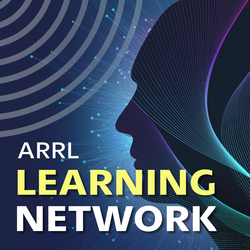 Jack McElroy, KM4ZIA, and Audrey McElroy, KM4BUN, discuss their experiences with high-altitude balloons and explain how others can launch them successfully. The discussion will also focus on using high-altitude balloons to engage youth in ham radio and create learning experiences for students.
Jack McElroy, KM4ZIA, and Audrey McElroy, KM4BUN, discuss their experiences with high-altitude balloons and explain how others can launch them successfully. The discussion will also focus on using high-altitude balloons to engage youth in ham radio and create learning experiences for students.
-Camp-(ISS-QSO-2).PNG)
-Camp-(Kit-Building)(1).png)
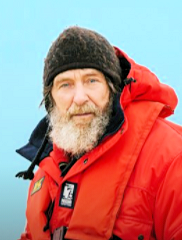 Fedor Konyukhov, R0FK
Fedor Konyukhov, R0FK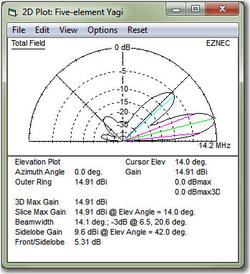 Roy Lewallen, W7EL, says that after 31 years of "developing, selling, and supporting EZNEC and its predecessor, ELNEC," he is
Roy Lewallen, W7EL, says that after 31 years of "developing, selling, and supporting EZNEC and its predecessor, ELNEC," he is 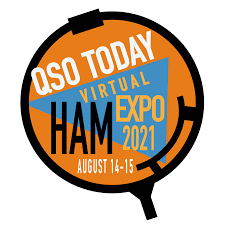 ham radio technology and practical techniques. ARRL is a QSO Today Virtual Ham Expo partner.
ham radio technology and practical techniques. ARRL is a QSO Today Virtual Ham Expo partner.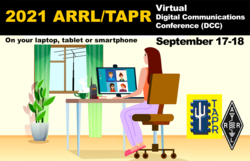 as well as chat and ask questions via the moderator monitoring the channel.
as well as chat and ask questions via the moderator monitoring the channel..jpg) pre-recorded presentation may be submitted in lieu of a live virtual presentation.
pre-recorded presentation may be submitted in lieu of a live virtual presentation.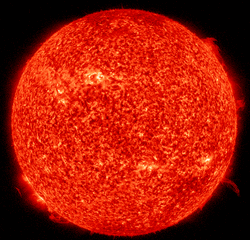 Predicted solar flux is 72 on July 15; 75 on July 16 - 21; 78 on July 22; 79 on July 23 - 28; 77 on July 29 - August 1; 75 on August 2; 74 on August 3 - 9; 73 on August 10 - 11; 75 on August 12 - 15, and 79, 81, and 79 on August 16 - 18.
Predicted solar flux is 72 on July 15; 75 on July 16 - 21; 78 on July 22; 79 on July 23 - 28; 77 on July 29 - August 1; 75 on August 2; 74 on August 3 - 9; 73 on August 10 - 11; 75 on August 12 - 15, and 79, 81, and 79 on August 16 - 18.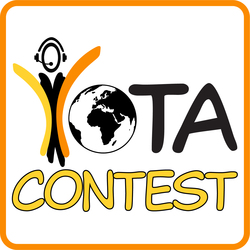 The next Youngsters on the Air Contest is July 18. Following the success of the first
The next Youngsters on the Air Contest is July 18. Following the success of the first 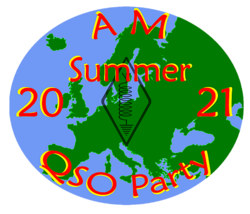 The Summer 2021 AM QSO Party is set for this weekend. The Amplitude Modulation Amateur Radio Society and the AM Amateur Radio Europe Facebook group have announced the Summer 2021
The Summer 2021 AM QSO Party is set for this weekend. The Amplitude Modulation Amateur Radio Society and the AM Amateur Radio Europe Facebook group have announced the Summer 2021 .jpg)








